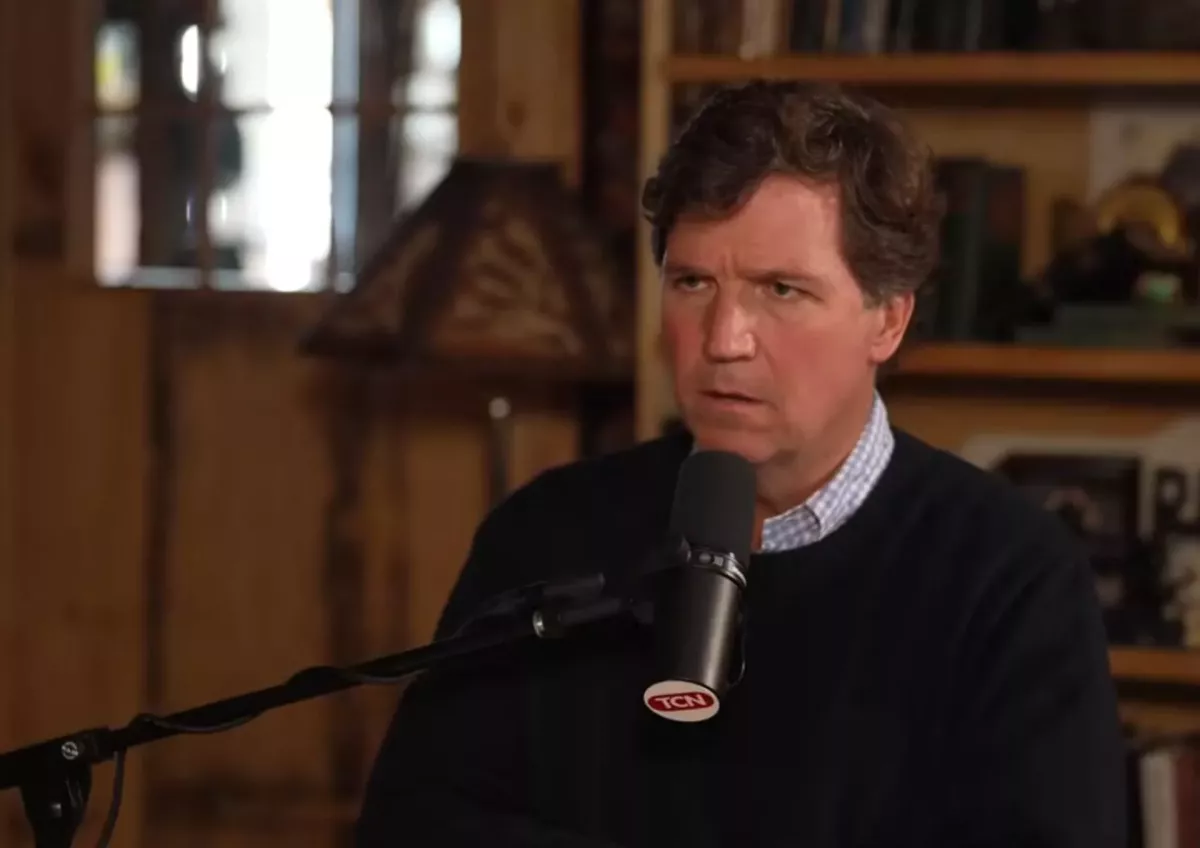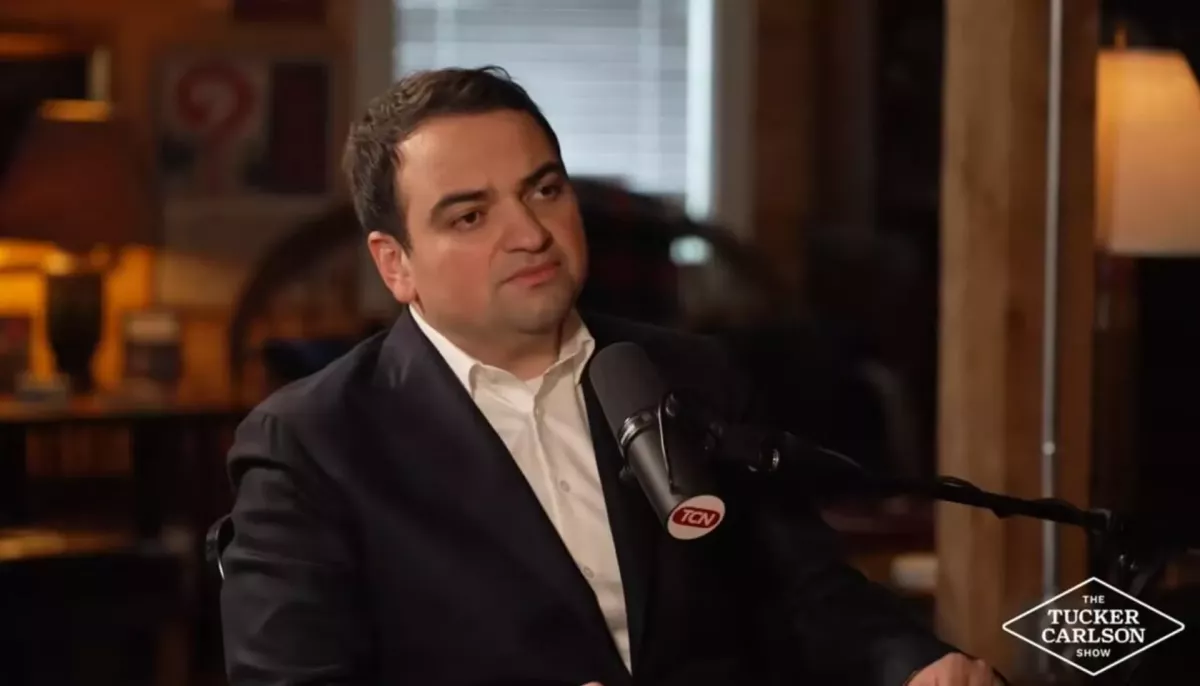Hybrid attack on Azerbaijan and Armenia The Carlson–Karapetyan media tandem and their objectives
On November 7, the scandal-prone American political commentator Tucker Carlson released another interview on his YouTube channel. No, it wasn’t with Vladimir Putin or even Sergey Lavrov. This time, Carlson presented his nearly five-million-strong audience with an interview featuring Narek Karapetyan, the nephew of the arrested Russian oligarch Samvel Karapetyan and coordinator of the anti-Pashinyan movement "In Our Own Way." Even this single piece of Karapetyan’s background should be seen as part of a broader, multi-layered attempt to reshape the narrative around the South Caucasus.
Lately, Carlson has frequently crossed the bounds of journalistic ethics: his broadcasts often become platforms for promoting carefully crafted narratives that resonate with parts of the English-speaking audience. Therefore, it is reasonable to say that the appearance of the coordinator of the pro-Russian “In Our Own Way” movement on this platform was not a random choice. It is part of a more complex and deliberate strategy, in which informational, political, and ideological interests are intertwined into a single scenario.
This scenario aims to craft a storyline favourable to certain forces, designed to stir up the region once again and drag Armenia and Azerbaijan back into the orbit of confrontation. The role of the radical Armenian lobby is clearly visible here, especially given that Carlson himself acknowledges being from California, where a large Armenian diaspora is “extremely successful but very cohesive.”
The first thing that is obvious to us is that this is a planned operation aimed at fostering emotional and ideological cohesion within the Armenian diaspora, as well as creating a favourable environment in the Western media for reinterpreting the regional agenda in terms of old conflict-driven clichés. Therefore, the efforts of both Carlson and Karapetyan to stir emotions stand out clearly — if you will, to evoke American sympathy for “oppressed Christians” and to reignite the fading fire of the conflict between Azerbaijan and Armenia.

Consider Carlson’s statement: “In this war — Azerbaijan, an Islamic nation, vs. Armenia, a Christian nation — and the cleansing of Christians in Nagorno-Karabakh, the region you just mentioned, Israel took a very aggressive position on the side of Azerbaijan against the Christians.” Of course, we are not naive enough to assume that Carlson is unaware of history or geopolitics. We recognise that he is well-versed in these matters, and therefore we cannot dismiss this piece of work by the American journalist as mere ignorance of history or the essence of the Armenian-Azerbaijani conflict.
The attempt to frame the more than 30-year conflict between Azerbaijan and Armenia — which was caused by Armenian territorial claims on Azerbaijani lands — in a religious guise was used by both Carlson and Karapetyan as a powerful emotional trigger. The interview is built on motifs familiar from Armenian propaganda: suffering, historical injustice, and religious identity. Karapetyan appeals to emotions, employing vivid imagery and rhetorical devices that are particularly effective in Western societies.
Moreover, before directing the audience’s attention directly to Azerbaijan, he starts from a distant historical point — the events of 1915: Armenians in the Ottoman Empire allegedly refused to convert to Islam, resulting in all men being killed and women with children being deported to the desert of Deir ez-Zor. “Christians in the 20th century followed the path of Christ and were sacrificed,” Karapetyan claims. This is a deliberate, long-established technique: by repeatedly amplifying falsehoods about a “persecuted people,” the audience is steered in a predetermined direction.
Next, after distorting an event from 110 years ago, the conversation turned to the Karabakh conflict. “At the end of the war—the last war—the Christian population of Nagorno-Karabakh, like many others, fled to Armenia. Now, after 2,000 years of living in this region, there are no Christians left in Nagorno-Karabakh,” Karapetyan lamented. Carlson immediately chimed in, expressing outrage: “Why Christian leaders in the West didn't say anything?”
Not a word was mentioned about the fact that the UN mission, which visited the Karabakh region of Azerbaijan, published a report following its trip stating that the local residents interviewed did not report any instances of violence against the civilian population after the cessation of hostilities.
One of the obvious objectives of this approach is to draw Armenia and Azerbaijan back into a state of confrontation, which both sides have been gradually and painstakingly overcoming. Karapetyan deliberately frames the Karabakh conflict in religious terms, making the situation potentially even more explosive. When a political dispute is replaced by the notion of a “battle of faith,” it becomes a path toward ideological and humanitarian crisis. This is precisely what makes the interview particularly troubling.
There is also another dimension to this provocation — the foreign policy aspect. Today, as relations between Azerbaijan and the United States are entering a phase of a new agenda — pragmatic, economically and energy-oriented — the emergence of such media provocations appears as an attempt to disrupt this agenda, create irritation, foster distrust, and undermine contacts. Carlson and Karapetyan, hand in hand, seek to give the audience the impression of a “historical mistake” by Trump that needs to be corrected.

At the same time, the interview also serves the internal objectives of the Armenian opposition. The country is preparing for elections, and three main spheres of influence have clearly emerged: oligarchic pro-Russian circles, including Samvel and Narek Karapetyan; religious structures led by the church; and forces seeking to mobilise former residents of Karabakh. When these three vectors are considered together, it becomes clear that Carlson’s interview with Karapetyan fits perfectly into a broader strategy of pressure on the Armenian government and public opinion, especially given the active work of the Armenian diaspora to overthrow the Pashinyan government and derail the peaceful agenda with Baku.
By the way, messages circulate in the Armenian segment of social media and media outlets claiming that Karapetyan paid $300,000 for the interview and promotion of related materials, with further installments likely. Moreover, against the backdrop of increased activity by structures connected to Ruben Vardanyan and his son David, who operates within European institutions, it is clear that a systemic network for advancing informational pressure is taking shape. There is certainly no shortage of funds for the Vardanyans or the Karapetyans, who amassed their enormous wealth in Russia.
In essence, we are witnessing an example of hybrid warfare. It is in this context that Carlson’s interview with Karapetyan should be understood: as a carefully planned, calculated media operation aimed at destabilising regional stability, mobilising radical forces against the Armenian authorities, and slowing down the normalization process. This clearly reflects the policy of former empires that cannot come to terms with the loss of their influence in the South Caucasus.
Azerbaijan observes these developments and responds with its characteristic strategic patience. However, the danger of such provocations should not be underestimated. They are not designed for immediate impact but for the gradual shaping of perception and the creation of a distorted picture of the region in Western public opinion. If each such signal is not identified in time, the consequences can be serious — from political complications to new flare-ups of tension. If the United States and Europe are truly interested in regional stability, they must pay close attention to these attempts to manipulate public opinion, as their platforms are often used to advance the interests of others.








